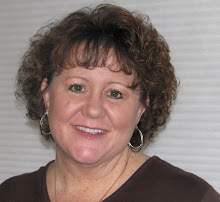
Sandpoint High School students Aubrie Perry and Bailey Scrimsher, both 15, have a plan. A very expensive plan.
Their families each sponsor a child from Uganda through International Children’s Network and both girls would like to travel to visit their sponsored child as well as participate in mission work.
The cost of the two- to three-week trip? Approximately $3,000 each. But that is not deterring these girls from doing all they can to achieve their goal.
“I did a bake sale when we had our yard sale,” said Scrimsher. “I made $80, but a lot of that was just donations.”
A couple of months ago the girls brainstormed and came up with the idea of putting on a week long day camp for girls.
“My parents then came up with the idea of making it an educational camp because parents like that,” said Perry.
So they went to work designing and printing their own colorful brochures for Camp Fun ‘n The Sun, which took place the week of July 5.
The result? After expenses, the girls each earned approximately $400 and will put that money toward their trip, which they hope to take next summer.
The girls worked hard planning various lessons and crafts for each day of camp and carefully shopped for supplies so they could maximize their profit.
“Our moms were a big help,” said Scrimsher.
With a different theme and an average of 10 campers each day, the girls had to carefully plan their activities for the five hours the kids were in their care.
“We did not want them running around in circles. We wanted them to be safe,” said Scrimsher.
The first day was eco-friendly day. The girls instructed and assisted the campers on how to make pine cone bird feeders and they each decorated an aluminum water bottle that they could use throughout the week.
“That way they didn’t have to use paper cups the whole week,” said Perry, emphasizing that the project was in line with the lesson on conservation.
When researching their lesson plans for the week, the girls relied heavily on the Internet and the video sharing website You Tube.
“It is so nice to actually see how it (the crafts) all is done,” said Scrimsher.
The second day was spa day where the campers learned how to make their own scrub using sugar and baby oil and Scrimsher massaged each of the girls’ feet while Perry painted their toenails and fingernails.
“They kept telling us they felt so spoiled,” said Perry.
On Wednesday, the teens introduced a unit on nutrition. Each of the girls received an apron which they decorated, and made homemade granola and pretzels.
“We showed them it is better to make your own food so you know what is going in it,” said Scrimsher.
“It also showed them that things that taste good are still good for you,” adds Perry.
On science day the girls led the campers in experiments crafting volcanoes out of clay and then using baking soda and vinegar to simulate a volcanic eruption.
The week culminated with water day on Friday where the kids decorated their own fish bowl and each was given a goldfish to take home.
Lunch was also provided by the girls who gave the kids a choice of peanut butter and jelly or a turkey sandwich in addition to a cheese stick, fruit and drink.
Scrimsher said the most challenging aspect of the experience was organizing and purchasing all the things needed for the various activities throughout the week.
“But then you see all our hard work pay off and it is worth it,” said Perry. “The pros definitely outweigh the cons,” adds Scrimsher.
One of the most rewarding aspects was to see how some of the more shy kids were able to make new friends.
The girls said they hope to travel to Uganda with their mothers next summer, but if that doesn’t work out, they will go not it will be sometime before they graduate in 2013.
While in Uganda, Scrimsher would like to help out at a medical clinic. Perry said she would like to interview some of the kids, take their picture and put together the information packets to share with families back home.
“I really want to help the kids get sponsors,” said Perry.
But whether they travel to Uganda next summer or later, they plan to host the camp again next summer.
“We’re hoping next year will be bigger and better,” said Scrimsher, who adds that she is hopeful this will also help land some babysitting jobs.
“It’s really hard work, but it all pays off in the end,” said Perry.

